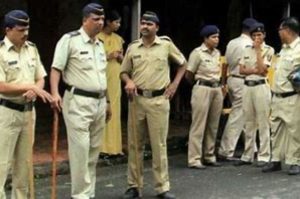Kolkata Indian Museum Bomb Threat: The Indian Museum in Kolkata, a 204-year-old institution renowned as the oldest and largest museum in India, became the center of a massive security operation on April 1, 2025. A bomb threat sent via email led to the immediate evacuation of hundreds of visitors and staff, triggering widespread panic and an extensive security sweep. The museum, which houses priceless artifacts and relics of India’s rich history, had to be shut down temporarily as bomb disposal squads and law enforcement agencies conducted a thorough search.
Though the threat was ultimately deemed a hoax, the incident raised serious concerns about security preparedness at high-profile cultural institutions. This event also mirrored a similar false alarm earlier in January 2025, bringing into question whether such threats are part of a larger pattern of misinformation or targeted psychological tactics.
In this detailed account, we will explore the sequence of events, the response by law enforcement, the impact on museum operations, security vulnerabilities exposed by the incident, and the broader implications of bomb threats at cultural and historical institutions.
Kolkata Indian Museum Bomb Threat: How the Threat Unfolded
The Threat Email
The security scare began when an anonymous email was sent to the Indian Museum’s official email address at approximately 11:00 AM on April 1, 2025. The message, sent from an unidentified source, warned that a bomb had been placed within the museum premises and would detonate by 1:20 PM.

What made the threat even more alarming was a specific claim that a group calling itself “Group 1378” was responsible for the planned attack. The email further suggested that a mass killing was imminent, raising concerns about a possible active shooter situation alongside the bomb threat.
Kolkata Indian Museum Bomb Threat: Immediate Action and Evacuation
Upon receiving the email, museum authorities immediately alerted the Central Industrial Security Force (CISF), which is responsible for the museum’s security, as well as the Kolkata Police. Within minutes, a high-priority security protocol was activated, leading to:
- Immediate evacuation of all visitors and staff, totaling approximately 536 people, including nine foreign nationals.
- Deployment of multiple bomb squads to inspect the premises.
- Shutdown of all museum entry and exit points to prevent any unauthorized access.
- Traffic restrictions around Jawaharlal Nehru Road, where the museum is located, to secure the surrounding area.
By 12:15 PM, bomb disposal units, sniffer dogs, and disaster response teams had arrived to begin a comprehensive room-by-room search of the museum’s 51 exhibition halls and storage areas.
Kolkata Indian Museum Bomb Threat: Security Response and Investigation


Deployment of Specialized Units
The police and security forces left no stone unturned in their response to the threat. Multiple agencies coordinated the security sweep, including:
- The Kolkata Police’s Bomb Disposal Squad – Tasked with neutralizing any suspected explosive devices.
- The Quick Response Team (QRT) – Specially trained units prepared to neutralize any active threats.
- The Disaster Management Group (DMG) – Ensuring safety protocols were followed in case of an explosion.
- The Cyber Crime Division – Tracing the origins of the threatening email.
Law enforcement officials conducted an exhaustive four-hour-long search operation across the museum, including restricted archival sections and underground storage where rare artifacts are kept.
Search Results and Declaring the Threat a Hoax
By 4:00 PM, the bomb squad confirmed that no explosive devices or suspicious packages were found inside the museum. Officials concluded that the email was likely a hoax aimed at spreading panic. However, the police continued their investigation to identify the perpetrators behind the email.
Cyber Crime Investigation
The Cyber Crime Division of Kolkata Police traced the email’s IP address, but initial findings suggested the message was routed through multiple proxy servers, making it difficult to pinpoint its exact origin. Investigators suspect that the email may have been sent from outside India or by individuals using advanced anonymization techniques to cover their tracks.
Law enforcement is now analyzing previous threats made against the museum, especially a similar hoax bomb threat in January 2025, to determine if there is a common link.
Kolkata Indian Museum Bomb Threat: Impact on Museum Operations
Closure and Resumption of Activities
Following the all-clear from security agencies, the Indian Museum remained closed for an additional 24 hours as a precautionary measure before reopening to the public.
Museum authorities emphasized that while no physical damage was inflicted, the emotional distress caused to visitors and staff was significant. Some tourists, particularly foreign nationals, expressed concerns about safety, and several tour groups canceled their planned visits in the following days.
Loss of Revenue and Visitor Confidence
As one of the most visited museums in India, the Indian Museum sees an average daily footfall of 2,000-3,000 visitors. The temporary closure and resulting cancellations led to a loss in revenue from ticket sales and gift shop purchases.
Moreover, security concerns deterred tourists, with several schools and institutions delaying scheduled educational trips in the wake of the bomb scare.
Kolkata Indian Museum Bomb Threat: Historical Significance of the Indian Museum
The Indian Museum, established in 1814, is the oldest museum in India and the ninth oldest in the world. It houses an unparalleled collection of artifacts, including:
- The 4,000-year-old Egyptian mummy, one of the very few in India.
- Ashoka’s Rock Edicts, critical to understanding ancient Indian governance.
- Rare Buddhist relics, including the Ashokan lion capital, which inspired India’s national emblem.
- A vast fossil and prehistoric exhibit, featuring ancient skeletal remains.
Given its historical significance, any threat to the museum is a direct threat to India’s cultural heritage, making security a paramount concern.
Kolkata Indian Museum Bomb Threat: Security Measures and Future Precautions
Following this incident, authorities are implementing new security protocols to prevent future threats:
- Enhanced Surveillance & AI-Based Threat Detection
- Installation of high-definition CCTV cameras with facial recognition software to monitor visitors.
- AI-powered anomaly detection systems to identify suspicious behavior.
- Upgraded Cybersecurity Measures
- Strengthening email verification systems to filter and detect threats before they reach museum authorities.
- Establishing a direct cybercrime liaison between the museum and law enforcement agencies.
- Increased Security Personnel & Drills
- Deployment of additional CISF officers at key entry points.
- Regular security drills for staff and visitors on evacuation procedures.
- Visitor Screening & Restricted Access
- More advanced baggage scanners at entry points.
- Access restrictions to sensitive areas such as artifact storage rooms.
Broader Implications of Bomb Threats on Cultural Sites
Growing Trend of Museum Threats
Kolkata’s Indian Museum is not alone in facing security threats. In recent years, several global museums and historical sites have received similar bomb threats, leading to:
- Increased security funding for major cultural institutions.
- Heightened awareness regarding cyber threats and misinformation.
The Psychological Impact on Visitors & Staff
Repeated threats create anxiety and fear among visitors, affecting overall museum footfall and tourism revenue. Experts believe that institutions must balance tight security with an open, welcoming environment.
The April 1, 2025, bomb threat at Kolkata’s Indian Museum, though ultimately a hoax, had significant repercussions. It disrupted operations, instilled fear, and revealed vulnerabilities in security infrastructure. While the swift response of law enforcement prevented any escalation, the incident underscored the need for enhanced cybersecurity, better visitor screening, and stronger emergency response protocols.
As cultural institutions remain prime targets for threats, adopting cutting-edge security solutions while preserving accessibility is the way forward. The Indian Museum’s legacy spans over two centuries, and with the right measures in place, it will continue to be a beacon of India’s rich heritage for generations to come.
DO FOLLOW:
Also read: Home | Channel 6 Network – Latest News, Breaking Updates: Politics, Business, Tech & More

